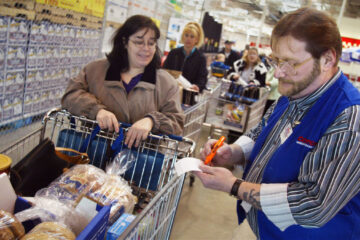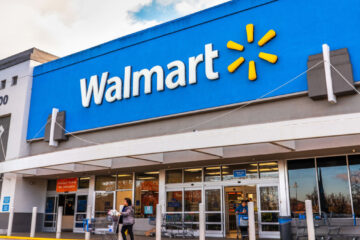What will happen with food stamps benefits? Are retailers affected? What about the packaged food companies and beverage manufacturers?
These are the key questions raised after the House Committee on Agriculture proposed major reforms.
The Republican-led Committee recently proposed cutting more than $290 billion from the Supplemental Nutrition Assistance Program (SNAP) over the next 10 years. Around 42 million people across the country rely on SNAP to buy groceries.
Related: Reports may show if economy is toughing out tariffs
The Committee argued that the program has become too expensive and inefficient, which is why it is proposing a reform that would include stricter work requirements, tighter eligibility rules, ending programs like SNAP-Ed, and giving states a financial responsibility in the program.
The goal behind the proposed changes is to reduce fraud, fix loopholes, and end “the Biden Administration’s illegal overreach.”
Anti-hunger advocates quickly criticized the proposal, warning that it could result in high rates of food insecurity, especially for parents who are unable to document enough work hours, reported NBC news.
“A vote for this bill will result in more kids facing hunger — in every state, in every community, in every zip code,” said Senior Director Jason Gromley, of the nonprofit Share Our Strength.
On the other hand, Morgan Stanley analysts estimate that the overall economic impact may not be as significant as it initially appears. Food and beverage industries would, however, be affected the most.
SNAP cuts are expected to disproportionately impact some retailers.
Image source: Shutterstock
Small and large-scale retailers will face challenges
Even before the Agriculture Committee revealed its actual proposal on SNAP cuts, the Center for American Progress (CAP), an independent nonpartisan policy institute, projected a serious impact on retailers.
According to CAP, more than 27,000 retailers in largely rural counties carry the highest risk of being negatively impacted by SNAP cuts.
“Some stores in low-income neighborhoods have more than 50 percent SNAP sales. A 20 percent cut to SNAP would make it very difficult for stores like this, in food deserts, to remain open,” said Stephanie Johnson of the National Grocers Association.
More on Retail:
Iconic retailer returns after 13 years to take on AmazonIkea’s new product offering could be a game changer for consumersBankruptcy forces ice cream chain to close 500 locations
In addition to small retailers, even giants like Walmart (WMT) will be affected. About 94% of SNAP shoppers purchased groceries at Walmart in the 12 months ended July 31, 2024, according to data from Numerator.
Further, budget retailers like 7-Eleven, Dollar General (DG) , Dollar Tree (DLTR) , and Winco Foods captured roughly twice the market share among SNAP shoppers, compared to those not using SNAP benefits.
Morgan Stanley projects lower cuts, ‘headwinds’ for packaged food and beverage companies
Meanwhile, Morgan Stanley analysts project that actual SNAP cuts may amount to only $150 billion, with only about $90-100 billion of direct reductions in SNAP benefits as increased state contributions would offset federal cuts, writes Barron’s.
“For packaged foods, SNAP cuts and category restrictions present another volume headwind (albeit modest) to an industry that is already struggling with weak underlying demand. For beverages, we view SNAP benefit cuts and state restrictions on SNAP use for soda (and potentially energy drinks) as a manageable incremental headwind for corporate sales growth,” Morgan Stanley said as reported by Supermarket Perimeter.
Companies with the highest level of exposure include Kraft Heinz Co. (KHC) and Conagra Brands Inc. (CAG) , while Coca-Cola (KO) , Keurig Dr Pepper (KDP) , and Monster Beverage Co. (MNST) are “well positioned despite moderate incremental SNAP risk, with strong pricing power, market share gains, and existing historical volume growth.”
According to Morgan Stanley experts, the most affected packaged-food companies besides Conagra are WK Kellogg (KLG) and J.M. Smucker (SJM) , because more than 22% of their sales are coming from low-income consumers.
With inflation already widely hurting people’s wallets and reducing their spending, low-income consumers might start to focus more on the more affordable private-label products.
Related: Iconic brand from your childhood finds new life
Analysts say SNAP shoppers are more likely to buy products from Conagra, Kellogg, and Kraft Heinz than from Mondelez (MDLZ) , Campbell’s, or Hershey (HSY) . Mondelez is less exposed, with only 25% of its sales in the U.S.
However, analysts think that most of the SNAP-related risks are already reflected in the stock prices of packaged-food companies.
Year-to-date, Conagra stock is down 19.05%, and Kraft Heinz dropped 14.53%.


